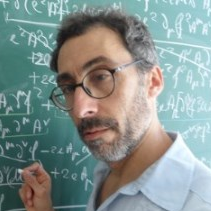100 Years of Quantum Matter Waves: Celebrating the Work of Louis De Broglie
A special issue of Symmetry (ISSN 2073-8994). This special issue belongs to the section "Physics".
Deadline for manuscript submissions: 30 September 2024 | Viewed by 5248
Special Issue Editor
Special Issue Information
Dear Colleagues,
In 1923, Louis de Broglie published the first articles [1–3] theoretically demonstrating how to extend the wave particle duality (discovered by Einstein for photons in 1905) to any material particles, such as electrons, protons or neutrons. This seminal work provided the foundation that paved the way for modern quantum mechanics as developed by Schrodinger, and independently by Heisenberg and subsequently Dirac. Wave mechanics, as it was named by de Broglie, was confirmed by many experiments realized over the years with more and more massive particles such as macromolecules or even Bose–Einstein condensates. At the same time, it is well known that de Broglie was not satisfied with the current form of quantum mechanics. Already in 1927, he proposed two alternative theories: pilot wave theory (rediscovered by David Bohm in 1952) and double-solution theory (where particles are defined as “solitons” solutions of nonlinear wave equations). Like Einstein or Schrodinger (and later John Bell). de Broglie disliked the fact that quantum mechanics is fundamentally indeterministic. Most of all, he wanted a theory where the famous mysteries of quantum mechanics are deciphered and where observers are not playing a central role in the interpretation (i.e., a bit like in classical physics).
For this Symmetry Special Issue celebrating the anniversary of de Broglie’s work, different views of the legacy of his discoveries and ideas would be discussed. Contributions emphasizing the experimental and technological consequences of his work are also welcome. Theoretical and historical works concerning quantum foundations and/or discussing alternative interpretations of quantum mechanics (not necessarily agreeing with the credo of de Broglie) are perfectly suited to this Special Issue. In particular, de Broglie–Bohm like theories (deterministic or stochastic) and models of particles using solitons will be favored. Finally, hydrodynamical or mechanical analogies could be discussed.
[1] Louis de Broglie, Comptes rendus, Vol. 177, 1923, pp. 507-510
[2] Louis de Broglie, Comptes rendus, Vol. 177, 1923, pp. 548-560
[3] Louis de Broglie, Comptes rendus, Vol. 177, 1923, pp. 630-632
Dr. Aurélien Drezet
Guest Editor
Manuscript Submission Information
Manuscripts should be submitted online at www.mdpi.com by registering and logging in to this website. Once you are registered, click here to go to the submission form. Manuscripts can be submitted until the deadline. All submissions that pass pre-check are peer-reviewed. Accepted papers will be published continuously in the journal (as soon as accepted) and will be listed together on the special issue website. Research articles, review articles as well as short communications are invited. For planned papers, a title and short abstract (about 100 words) can be sent to the Editorial Office for announcement on this website.
Submitted manuscripts should not have been published previously, nor be under consideration for publication elsewhere (except conference proceedings papers). All manuscripts are thoroughly refereed through a single-blind peer-review process. A guide for authors and other relevant information for submission of manuscripts is available on the Instructions for Authors page. Symmetry is an international peer-reviewed open access monthly journal published by MDPI.
Please visit the Instructions for Authors page before submitting a manuscript. The Article Processing Charge (APC) for publication in this open access journal is 2400 CHF (Swiss Francs). Submitted papers should be well formatted and use good English. Authors may use MDPI's English editing service prior to publication or during author revisions.
Keywords
- quantum matter waves
- quantum mechanics
- quantum foundations
- hydrodynamical
- mechanical
- nonlinear wave equations





